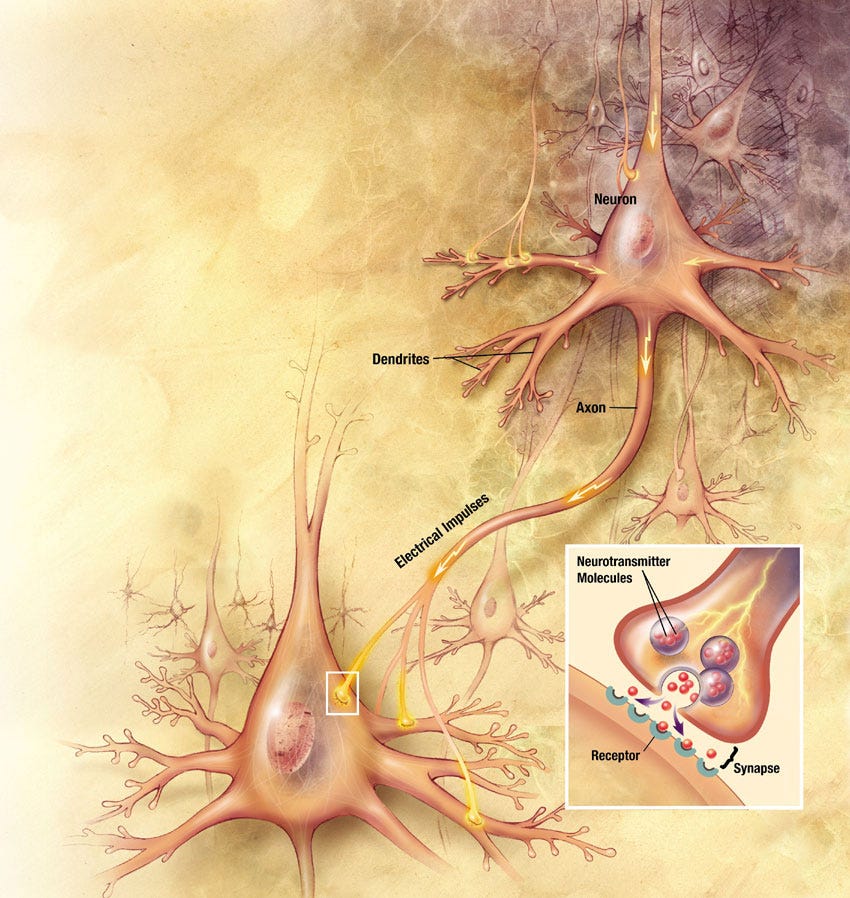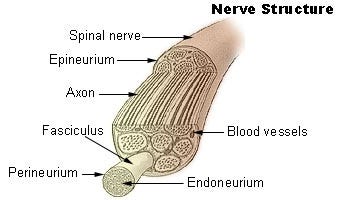Neuron structure

What is it? A neuron is a nerve cell. They react to and create electrical events/impulses and are the fundamental units of the brain and nervous system.
What are the parts of a neuron? Neurons are made up of three basic components: the cell body (soma), axons (signal away from the soma, efferent signals), and dendrites (receive afferent signals). Dendrites have branches called spines that allow many different neurons to communicate with the neuron it’s a part of.
How do these parts work together? The axon generates action potentials that trigger the release of a chemical, a neurotransmitter. The place where the axon of one neuron meets the dendrite of another is a synapse. The postsynaptic contact site on the dendrite has receptors for the neurotransmitters, alerting that neuron to the signal to pass it along to the next neuron in the pathway, converting electrical to chemical and back again.
Gross fact: The resting membrane potential inside an axon is estimated to be -70 milliVolts.

How are neurons a part of nerves? The axons bundle up as nerve fibers within a protective sheath called perineurium, creating a nerve fascicle (or fasciculus). Multiple nerve fascicles bundle up with blood vessels and additional membrane/connective tissue (epineurium) to create what we know of as “nerves”.
Fancy term for this: funiculus.

For more information:
Queensland Brain Institute - Action potentials and synapses
Neuroanatomy - neurons



